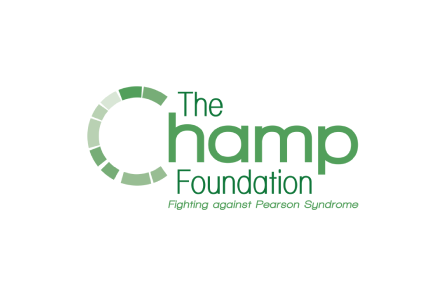The Champ Foundation
Cycle 1
Pearson Syndrome (PS) is a multi-system disease caused by a deletion in mitochondrial DNA. The hallmark features are sideroblastic anemia and pancreatic insufficiency. PS is often fatal in infancy. In addition to the hematological and pancreatic symptoms, PS can impair the heart, kidneys, eyes, ears and brain. Survivors develop Kearns-Sayre Syndrome.
Last updated 04/30/2025
Clinical
Disease Class
Cardiac diseases
Genetic diseases
Hematological diseases
Inherited metabolic disorder
Mitochondrial Disease
Neurological diseases
Ophthalmic diseases
Body Systems
Cardiovascular / Circulatory
Digestive
Endocrine
Hematopoietic / Lymphatic / Immune
Integumentary / Exocrine
Metabolic
Muscular / Skeletal
Nervous / Sensory
Renal / Urinary / Excretory
Organs
Blood vessels (veins, arteries)
Bone marrow
Brain
Connective tissue / joints
Ears
Eyes
Heart
Intestines
Kidneys
Liver
Lungs
Lymph fluid, nodes, ducts, vessels
Muscles
Nose
Pancreas
Parathyroid
Skin
Stomach
Throat/pharynx
Thyroid
Known Genetic Link
Yes, one or more genes directly cause the condition
causative_genes
None specified / unknown
contributory_genes
None specified / unknown
Type of Inheritance
De novo
Mitochondrial
Newborn Screening
No
Disease Mechanism(s)
Inherited metabolic disorder
Mitochondrial defects
Mitochondrial disorder
Unknown
Age of Onset
Adolescence (12-17)
Adulthood (age 18-64)
Early childhood (age 1+-5)
Infancy (age 0-1)
Middle childhood (6-11)
Average Age at Diagnosis
Early childhood (age 1+-5)
Infancy (age 0-1)
Middle childhood (6-11)
Life Expectancy
Adolescence (12-17)
Early childhood (age 1+-5)
Infancy (age 0-1)
Middle childhood (6-11)
Affected Sex(es)
Female
Male
National Prevalence
101-1000
Global Prevalence
Unknown
National Incidence
Less than 10
Global Incidence
Less than 10
Symptoms / Phenotypes
anemia
diabetes
diarrhea
failure to thrive
fatigue
pain, abdominal
Biomarkers
None
Existing Therapies
Expanded access (Compassionate Use)
FDA-Approved for Symptom Relief
· Given the extent of symptoms children have, there are definitely approved treatments for symptoms (e.g., anti-nausea meds, feeding tubes, pace maker surgery, pancreatic enzymes, etc) but none address the underlying mitochondrial disease .
Organizational & Research
Cell Lines
iPSCs
Cell Lines, Institution
Boston Children's Hospital
Cell Lines, Involvement
Funded
Cell Lines, share
Unsure
Disease Model
C. elegans
Mouse
Disease Model, Involvement
Funded
Disease Model, share
No
Clinical Trial Role
Data analysis
Data sharing
Funding
Meeting with regulators
Outcome measures, development
Recruitment and outreach, patients
Recruitment and outreach, trial sites/physicians
Results dissemination, publication
Study material design, review (not protocol)
Study protocol design, review
Travel coordination
Biobank, Institution
Boston Children's Hospital
Biobank, Involvement
Designed
Funded
Center of Excellence, Institution
Children’s Hospital of Philadelphia (CHOP)
Cleveland Clinic
Center of Excellence, Involvement
Consulted
Designed
Endorsed/Certified/Accredited
Funded
Registry
Yes, we have a registry that we created
Data Collected, Registry
Clinical data
Electronic health records/electronic medical records
Genetic data
Longitudinal natural history data
Medication usage
Patient contact info
Patient-reported data
Data Entered by, Registry
Both
Platform, Registry
Ordinal Data
Natural History Study
Yes, we have a natural history study that we created
Data Collected, Natural History Study
Clinical endpoints (outcomes)
Electronic health records/electronic medical records
Genetic data
Imaging data
Medication usage
Patient-reported outcomes
Prospective data
Retrospective data
Platform, Natural History Study
Ordinal Data
FDA Patient Listening Session
No
FDA Patient-Focused Drug Development (PFDD) Program
No
ICD Codes
No, we do not have any ICD codes
Diagnostic Guidelines
No
Science Advisory Board Policies
Yes, willing to share SAB policies
Research Network Policies
Has CRN and willing to share policies
Research Roadmap
We don't have a Research Roadmap
International Chapters
None
International Partners
Europe
North America
Oceania
